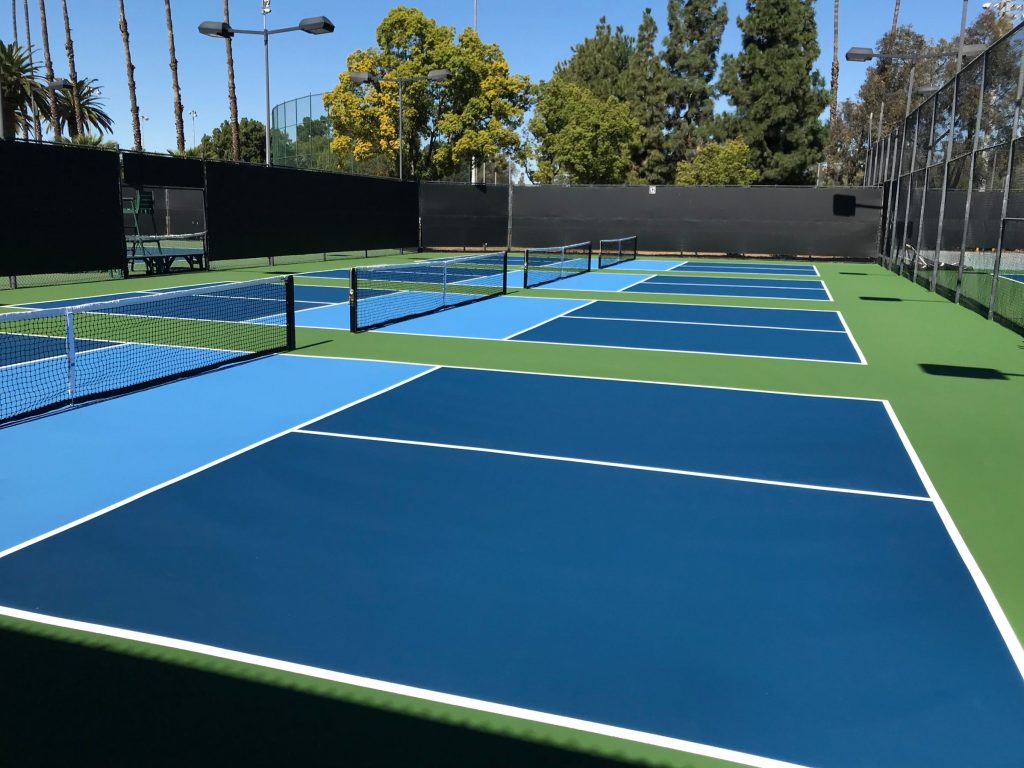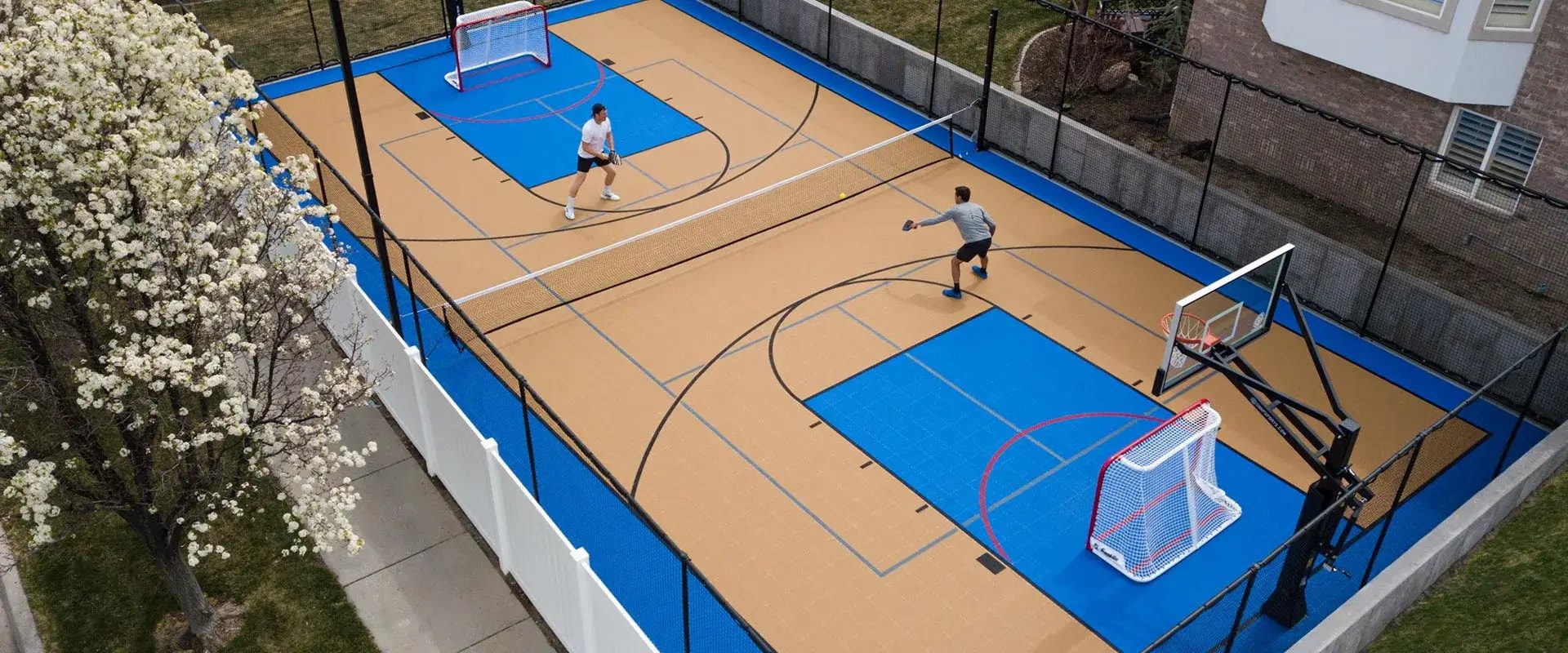Secret Consider the Building And Construction of Pickleball Courts: From Website Choice to Last Surfaces
The building of pickleball courts includes an array of critical elements, beginning with the choice of an ideal website that stabilizes accessibility with environmental considerations. Vital aspects such as court measurements, surface area materials, and drainage systems significantly impact not only the quality of play but likewise the longevity of the facility.
Site Selection Criteria
When starting the construction of pickleball courts, it is vital to nail down the site selection criteria that will ensure optimum playability and access. The area has to be conveniently obtainable for players, ideally situated near houses or area facilities, to encourage participation.
Moreover, the surface must be level and stable, as uneven ground can bring about safety and security dangers and impact gameplay. Adequate water drainage is additionally important; choosing a site with excellent water overflow will aid preserve court conditions throughout negative weather.
An additional crucial consideration is the availability of energies. Access to power and water is needed for lighting and upkeep functions. Additionally, distance to vehicle parking facilities is crucial, helping with easy gain access to for players and viewers alike.
Ecological aspects can not be overlooked; all-natural shade from trees can improve gamer comfort, while direct exposure to prevailing winds might disrupt play. Last but not least, zoning policies and area support must be considered to make sure that the project lines up with regional guidelines and gets the backing it requires for successful execution. By carefully examining these standards, stakeholders can create an inviting and practical setting for pickleball enthusiasts.
Court Dimensions and Design
To make certain optimal gameplay and adherence to policies, the dimensions and design of pickleball courts have to be carefully defined. A conventional pickleball court gauges 20 feet in size and 44 feet in size for both songs and doubles play. The recommended layout includes a non-volley zone, frequently described as the "cooking area," expanding 7 feet from the web on either side. This location is crucial, as it influences player positioning and shot selection - Illinois and midwest.
The net height is established at 36 inches at the sidelines and 34 inches at the facility, developing a mild dip that influences ball trajectory. Court markings are equally crucial; lines should be 2 inches wide and distinct in shade to make certain presence.
Furthermore, a buffer zone bordering the court is suggested, normally prolonging 5 to 10 feet beyond the sidelines and baselines to suit gamers' motions and enhance safety. Correct design and dimensions not only make certain conformity with official laws however also enhance the total playing experience, accommodating both entertainment and affordable play. Careful preparation in these areas is paramount to the effective building and construction of pickleball courts.
Surface Product Options
Picking the appropriate surface area material for pickleball courts is crucial for making certain ideal player performance and safety and security. The option of surface can dramatically impact gameplay, including sphere bounce, traction, and player Read Full Article convenience.
There are a number of alternatives offered, each with its distinct attributes. Asphalt is a popular option due to its longevity and low upkeep requirements. It supplies a solid playing surface area that can endure numerous weather yet may call for periodic resurfacing.
Concrete is one more extensively utilized product, providing excellent longevity and a smooth surface. It permits for regular sphere bounce yet can be hard on players' joints, making it much less preferable for long-term play without appropriate padding.
For those looking for enhanced comfort and shock absorption, supported acrylic surface areas present a practical option. These surface areas combine a base layer with an acrylic topcoat, supplying boosted grip and a softer feel, which is useful for lowering the risk of injuries.
Lastly, synthetic grass is getting grip, specifically for multi-purpose facilities. Its flexibility and lower maintenance needs make it an appealing alternative, though it might not provide the same ball reaction as standard difficult courts. Cautious factor to consider of these alternatives will certainly make certain an optimum having fun setting.
Water Drainage and Lights Factors To Consider
Correct water drainage and reliable websites lights are crucial parts in the building and construction of pickleball courts, dramatically affecting both playability and safety and security. Appropriate drain systems stop water build-up, which can result in slippery surface areas and damages to the court framework. A well-designed drainage strategy includes sloped surface areas and suitable materials to facilitate water move far from have a peek at this website the playing area - Illinois and midwest. This not only maintains the stability of the court however also minimizes downtime as a result of bad climate condition.
Lights is just as crucial, especially for courts planned for night usage. The positioning of lighting fixtures should be purposefully prepared to eliminate darkness and supply even distribution of light across the court.

Final Finishes and Maintenance
After attending to water drainage and lighting considerations, attention turns to the final finishes and ongoing maintenance of pickleball courts. Illinois and midwest. The choice of surface material is essential, as it impacts both playability and sturdiness. Typical choices include acrylic coverings and specialized sports surfaces that provide optimal grip and padding. These surfaces must be applied in multiple layers to ensure resilience versus climate aspects and use.

Seasonal upkeep could include resurfacing every couple of years, depending on usage and ecological factors. Appropriately maintaining internet, court lines, and bordering locations is equally crucial to provide a risk-free and delightful playing experience. By purchasing top quality finishes and adhering to an organized upkeep schedule, facility proprietors can guarantee their pickleball courts remain in outstanding problem for several years to come.
Final Thought
Finally, the successful construction of pickleball courts hinges on careful focus to several essential aspects. Website option should prioritize ease of access and surface security, while court measurements and format have to abide by optimal standards for gameplay. The choice of surface material substantially affects gamer safety and security and efficiency. Effective drainage and sufficient illumination contribute to court longevity and visibility. Finally, high quality coatings and a durable upkeep timetable are crucial for preserving the court's condition, enhancing the total experience for gamers and viewers alike.